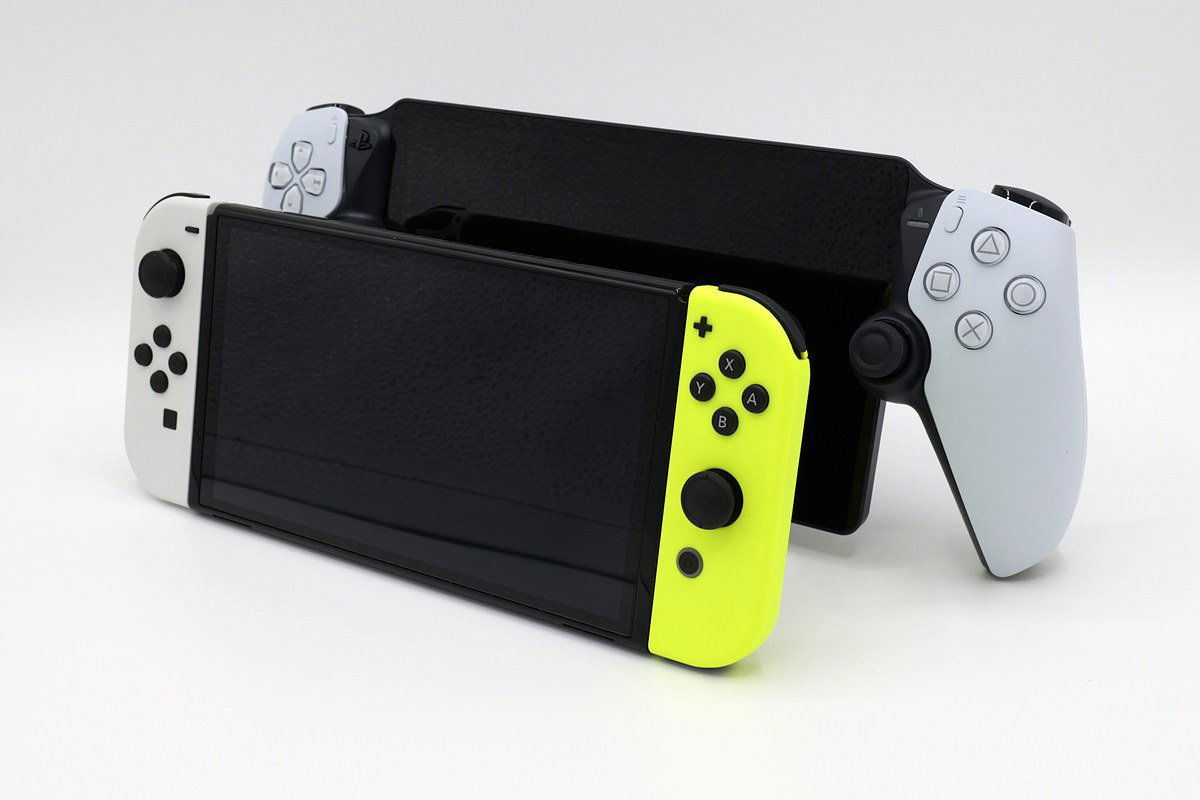

The countdown to the launch of the PlayStation Portal has begun. Fans are excited to experience Sony’s latest innovation in handheld gaming. But ever since the PlayStation Portal was announced, there has been a lot of curiosity around the product, considering it is an accessory. Further, there is already a major player in the handheld gaming market, the Nintendo Switch.
Watch What’s Trending Now!
The look and branding of PlayStation Portal invites a strong comparison of the product with Nintendo’s hybrid console. While both the products look strikingly similar to each other, there are a lot of differences that make both the products poles apart. Well, here’s how PlayStation Portal is different from Nintendo Switch technology on various parameters.
ADVERTISEMENT
Comparing PlayStation Portal with Nintendo Switch
Before beginning the comparison, there’s an important clarification. Both the gadgets might be portable gaming machines, but that’s about it. The Nintendo Switch is an independent gaming console that can be used to play both physical and digital games, whereas, without a PlayStation 5, the PlayStation Portal is useless, considering it’s an accessory. Sony’s handheld Portal’s purpose is to enable remote play, which is the streaming of games from PS5.

ADVERTISEMENT
Nintendo Switch
ADVERTISEMENT
Nintendo’s hybrid console stands out as a versatile gaming device that supports a wide range of gaming experiences. It’s developed to be played on a handheld or while connected to a TV. The hybrid nature of the console allows seamless transitioning between portable and console gaming. Its detachable joy-con controllers offer various options, including motion controls. Additionally, the ability to download and play games directly on the device itself contributes to its flexibility and autonomy.
Top Stories
Footage Surfaces of Puka Nacua’s Brother Samson Slapping Fan After Arrest for Allegedly Stealing Lakers’ Adou Thiero’s SUV

Footage Surfaces of Florida Police Arresting NASCAR Veteran Over Disturbing Public Misbehavior

Browns & Kevin Stefanski Sign Ousted Cowboys Player For Shedeur Sanders Before Week 16 Bills Game

“RIP”: Prayers Pour In as Tom Brady’s Raiders Struck by Tragedy

“Rest in Peace”: Prayers Pour In From Dan Marino as Dolphins Legend Mourns Tragedy in South Florida Football

“What Do You Come Back For?”: Tony Gonzalez’s Strong Retirement Message to Travis Kelce Amid Chiefs’ Rebuild


ADVERTISEMENT
PlayStation Portal
PS Portal has been tailored specifically to serve as an accessory for the PS5 console. Users can stream games from their PS5 to the Portal’s screen.
ADVERTISEMENT
It is important to note that the functionality depends on stable Wi-Fi and relies entirely on the PS5’s hardware for the gaming experience. Unlike the Nintendo Switch, the Portal lacks the ability to download and play games natively on the device, limiting its usability to being an extension of the PS5.
Value for money based on specifications
The OLED panel for Nintendo Switch has a 7-inch display with 720 pixels in resolution. Portal, on the other hand, has an 8-inch LCD panel with 1080p resolution. Both the devices, however, share an equal refresh rate of 60Hz. Some PlayStation fans might be disappointed with the fact that there’s no OLED to improve brightness, contrast, and accuracy, but considering the price is $199.99, the lack of OLED seems understandable. Further, the demand is so high that after pre-order launched, it was reportedly sold out across multiple retailers in Japan and U.S.
ADVERTISEMENT
The choice between the two products highly depends on the requirements of the player. Switch offers a higher value for money when you consider the cluster of options it offers for gamers in a slightly heavier price range. The Switch’s biggest advantage is that it’s an independent console. However, the PS Portal might be a helpful addition for all the PS owners who don’t always have access to the TV.
So, clearly, both the products cater to a completely different set of audiences and the only strong similarity they share is the look. The PS Portal, as an accessory, forms part of the PlayStation ecosystem, so to speak. So what’s your pick between the two?
ADVERTISEMENT
Watch This Story: Every PlayStation 5 Rumor You Should Know About
ADVERTISEMENT
ADVERTISEMENT
ADVERTISEMENT

